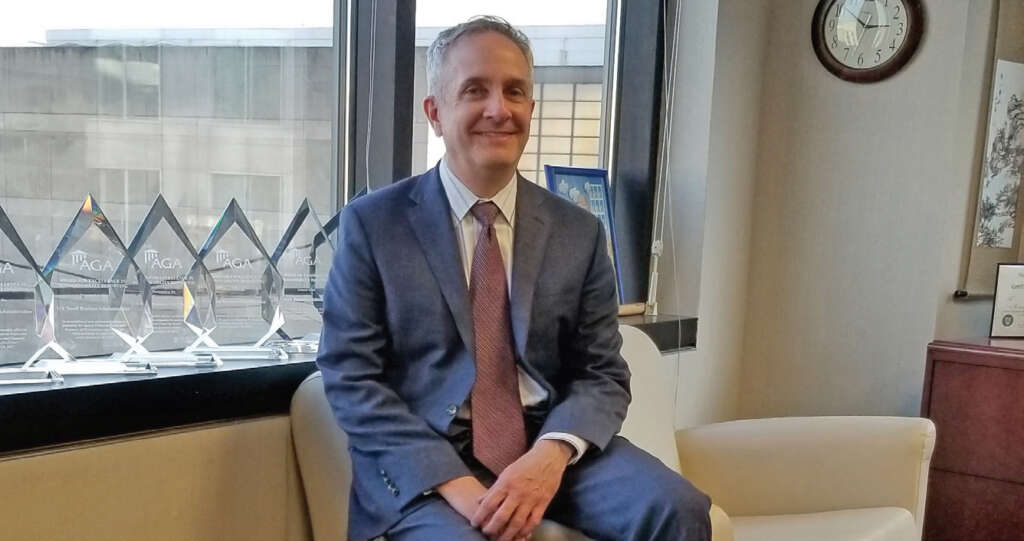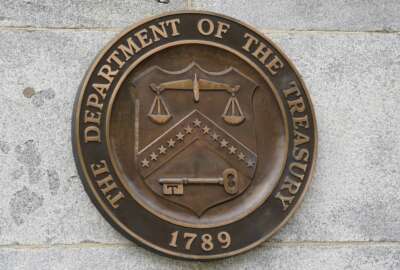Fiscal Service using death data to reduce improper payments
Tim Gribben, the commissioner of the Bureau of the Fiscal Service, said the bureau refined and reframed its progress statement for the first time since 2018.
The Bureau of Fiscal Service in the Treasury Department has a stretch goal — help prevent $12 billion in improper payments by 2029.
Luckily for the bureau, Congress gave it some much needed help to improve its Do Not Pay database.
The Fiscal Service now has access to the Social Security Administration’s Death Master File, which contains over 83 million records of deaths that have been reported to SSA.
Tim Gribben, the commissioner of the Bureau of the Fiscal Service, said Congress gave the agency access on a pilot basis for three years in 2023 as part of the omnibus appropriations bill.

“We are hoping, and there’s some action, to make that permanent. We’re still analyzing the results,” Gribben said on Ask the CIO. We’ve incorporated the full Death Master File in January. What that means when we are making a payment, we are using that file to help agencies certify a payment before that payment is actually made. Is this a payment going to somebody who’s died or not? As close as you can get to that date of death, the chances that you’re not going to make an improper payment is reduced.”
The bureau didn’t have access to the data previously because the Social Security Act precludes the sharing of the full Death Master File with non-benefits paying agencies.
Gribben said the bureau worked with SSA to ensure they had safe and secure access to the data as part of the Do Not Pay database.
He said in the short amount of time they have had access, the results have been “extremely good.”
“It’s scary when you think about the number of people who unfortunately pass away every day, but there’s a significant number when you talk about a country the size of ours. And because federal law also dictates whether or not the payment can be made to somebody who has been deceased, it’s helping agencies not make the payments that they’re not supposed to make,” he said. “We’ve also been working this year with the Social Security Administration on even looking at them providing their beneficiary payment files to us in a shorter amount of time than they normally do. That’s also showed an enormous savings in terms of just advancing when they send us the file by one day and has dramatic results in terms of the number of people who have passed away just in one day.”
Improper payments cut
For example, in fiscal 2023 alone, Gribben said the Do Not Pay database helped prevent over $650 million in potential improper payments. Across the government, the Government Accountability Office estimated agencies paid out $236 billion in improper payments last year. Of that, GAO says agencies estimated about $175 billion, or over 74 percent, of this total was the result of overpayments.
The Fiscal Service’s goal to help further reduce improper payments is one of several outlined in its 2023 progress statement, issued earlier this summer.
Gribben said the bureau refined and reframed its progress statement for the first time since 2018.
“We realized we weren’t really articulating clearly our goals because originally, our goals were framed in terms of our main audiences, which are agency CFOs, the financial management community at large, as well as the American people that we serve. We categorized them according to our five portfolios of products and services, dispersing money, collecting money, reporting on that, servicing and financing,” he said. “We thought, well, the audience hasn’t changed and the portfolio hasn’t changed, but we weren’t really articulating the purpose around the goals. So this year, the reframing is around good stewardship, modern experience and improved delivery.”
The bureau’s goal to help reduce improper payments is part of the good stewardship goal as is continuing to cut down intergovernmental differences. Gribben said in 2017 it was a $1 trillion, but now through better coordination and the use of the G-invoicing system those differences in 2023 were down to $39 billion.
Making data more valuable
Agencies are required to only use G-invoicing for intergovernmental transactions by Oct. 1, 2025. Gribben said most agencies already do with more than $14.7 billion in transactions having gone through the system in 2024.
“For our fiscal 2023 financial statements, it was the first time that, from a consolidated basis of financial statements for the federal government, we were materially balanced. That’s because we’ve brought this intergovernmental difference down to a non-material level, which is fantastic,” he said.
Another accomplishment in 2023 for the Fiscal Service that cuts across all three priority areas was the turning the Daily Treasury statement, which gives a lot of information about the nation’s cash balances, from a static PDF document to a dynamic database.
Gribben said agencies, financial institutions or really any now are able to more easily do trend analysis on the daily cash balances.
“We migrated all these data sets to fiscaldata.treasury.gov, and we provide the data in a way that it’s centralized and it’s available for stakeholders or the public to manipulate, analyze and do what they want with it,” he said. “We also provide the ability to do trend analysis to say, ‘hey, I want to understand what was the cash balance over this period of time?’ We also provide information about those data sets. We have metadata surrounding it. We have information about the quality of that data, or if there’s any things that people should be aware of in terms of being able to understand the data set, rather than just providing a standardized data set on some generic website.”
Looking forward into 2025 and beyond, Gribben said the bureau will continue to modernize its payment integrity services. It has a “tiger team” working with the Federal Reserve Banks to consider the next steps and opportunities.
He added another big goal for 2025 is to further reduce the use of paper checks sent to citizens. While the government is using electronic transfer for about 98% of all checks, Gribben said Treasury is trying to reduce the number even further.
“What people don’t realize is that a paper check is 16 times more likely to experience some type of an exception, non-receipt, fraud or whatever that might be, and as opposed to someone who’s directing a payment to go into the bank account. We’ve been working on a no checks coalition, which is a group of agencies who are the highest check producers in the federal government, including the IRS,” he said. “We also have an agency priority goal around the digital experience and payment experience for taxpayers that we have a joint goal where we’re working with the IRS on helping them to reduce that or increase, I should say, the digital presence for taxpayers, as well as at the Fiscal Service. We also are working with the other agencies on providing other digital options. So what does that mean? In order to be able to provide that digital experience, we have to provide the payment methods that citizens want in their digital wallets and how fast they want to go into the bank account. So for instance, we’ve been exploring what does instant payments look like? And how would Treasury be able to provide instant payments, whether it’s somebody trying to make a payment to the federal government or whether the federal government is trying to make a payment to a citizen? Those are all the things that we’ve been working on as part of improving the experience that citizens have interacting with the government.”
Copyright © 2025 Federal News Network. All rights reserved. This website is not intended for users located within the European Economic Area.
Jason Miller is executive editor of Federal News Network and directs news coverage on the people, policy and programs of the federal government.
Follow @jmillerWFED








